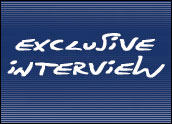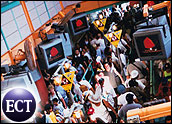
Software as a Service (SaaS) solutions have been around for years. However, until recently organizations only reluctantly engaged them, choosing instead expensive and complex custom software builds implemented solely within their enterprise systems.
Surely, SaaS developers have changed. However, their prospective clients have, too. Gone are the fears that information transfers to a hosted solution will endanger data security.
Safety, Scalability and SOA
“Many, many CIOs were concerned about sensitive data sent outside their firewall and refused to consider any SaaS options as a result,” says Michael Greenberg, vice president of marketing for Loyalty Lab. “These same CIOs now see that SaaS companies have not been the source of major data breaches, so their comfort level has increased.”
Loyalty Lab’s SaaS solution lets consumer brand marketers create and send campaign and triggered e-mail on the same platform that manages their loyalty program, promotions and campaign management.
Also enticing companies to SaaS is new, robust scalability of the solutions.
“Most large companies had major concerns with a SaaS solution’s ability to handle the scale of their operations. These companies could not risk a core system being unavailable or performing sluggishly,” he says. “Those concerns have been alleviated by years of smooth operations along with mature platforms much more capable of handling large loads.”
Third, integration options have evolved. “Whereas large file transfers or server-side integration was resource intensive, today’s standards-based APIs (application programming interface) make integration much faster and simpler,” Greenberg tells CRM Buyer. “This allows forward-thinking organizations to leverage their SOA environments.”
Money Talks
“Issues of data ownership, reliability, scalability and security were a concern for larger organizations in the past,” agrees Jason Mittelstaedt, vice president of marketing at RightNow Technologies. “All of these issues have been overcome and now we are seeing more enterprise firms taking advantage of the lower costs and ease of deployment that SaaS offers.”
Two-thirds of RightNow’s CRM customers are companies with sales of more than US$1 billion or large government organizations. Ninety percent of them run their data on the company’s hosted software.
“The SaaS model is definitely meeting their needs,” he tells CRM Buyer, as well as meeting their budgets. “More often than not, they are embracing the SaaS model because they can get their business needs met more quickly and cost effectively.”
This doesn’t surprise Ali Jani, CTO of Everest Software. In vertical solutions such as CRM, SaaS can make sense indefinitely. SaaS adopters don’t need to worry about their CRM investment or access. The cost is fixed, and the Web application is implemented within days rather than weeks or months. “Budgeting and maintenance are easy to manage,” Jani says.
“What was missing in the first wave was the technology wasn’t there,” explains Ben Pring, research vice president at Gartner.
SaaS vendors tried to shove a full CRM solution into a Web application so that users struggled to draw data through phone lines. “Now we have the infrastructure in the Internet that can move more information and new software that exploits the Internet as a delivery and communication platform,” Pring notes.
Organizations looking for solutions face the same frustration with the on-site, client server model that always existed: a huge upfront investment and significantly more in ongoing software maintenance, he says. “The user need never changed. SaaS was just not implemented because of the technology,” he tells CRM Buyer. With improved technology, the decision to engage a pay-as-you-go economic model is often a no-brainer.
Making Compromises With Customization
Pring says that companies with extremely complicated business requirements are looking at some of their cultural processes as cost-prohibitive.
“The tradeoff is the Prado equation, the 80/20 rule,” he says. Corporations may not get 100 percent of the functionality they seek through a SaaS product, but for what they pay, many consider the compromise and change required worth it.
In addition, SaaS market leaders have improved their customization options to meet most enterprise needs, says Loyalty Lab’s Greenberg. “Salesforce.com leads the way with their Apex platform providing a dizzying array of options to incorporate SaaS into any enterprise environment; and their AppExchange partner directory providing many highly specialized, off-the-shelf options for specific applications,” he says.
SaaS vendors offer three main benefits, according to Mittelstaedt — faster time to deploy, lower total cost of ownership and accountability.
They release new functionality much more quickly than installed solutions and tend to be much closer to leading-edge Web technologies, Greenberg adds. These advantages have changed the competitors but not eliminated them.
Old School Vendors Not Yet in New Age
“Enterprise vendors are moving quickly to make their products act more like SaaS products, with much deeper support for Web services and other Web technologies,” he says.
To really compete with hosted solutions, though, traditional on-premise developers and vendors will need to shed systems integrators and consultants that reinforced the complex and lengthy deployments.
“This is a big-step function change,” says Pring. “Now the equation is different.”
Buying software is now the conclusion to organizations’ problems rather than the beginning of them. “And that’s a huge component to the SaaS value proposition,” he notes.






















































Social CRM
See all Social CRM